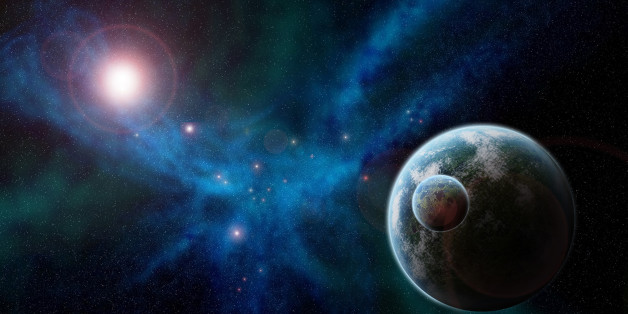
It could be the first new planet discovered in the last 170 years -- or at least the last 85, if you're one of those stubborn folk who still insist on calling Pluto a planet.
Two Caltech astronomers, Mike Brown and Konstantin Batygin, have noticed some weird behavior in the outer solar system they think is caused by an unseen world orbiting roughly 500 times farther from the Sun than Earth does.
The evidence consists of a strange alignment of some so-called Kuiper Belt objects (KBOs) -- ice-bound orbs that are cousins of Pluto. These oversized hailstones are strewn throughout the dim and distant nether regions of our solar system. Their discovery almost a decade ago led to Pluto's loss of membership in the pantheon of planets.
It seems that about a dozen of the Kuiper Belt objects have orbits that are similarly aligned, both in direction and in tilt to the ecliptic plane. Even without knowing the meaning of the word "ecliptic," any savvy reader will realize that this is an unlikely situation, akin to spilling a handful of pencils onto a table and finding that they pretty much all point in the same direction. The Caltech researchers figure that the odds of this happening by chance are at least hundreds to one.
So what is the explanation? On the basis of computer simulations, the astronomers reckon that the Kuiper Belt objects are being pushed around by gravitational interactions with a planet roughly twice the diameter of Earth. This object would be located on the side of the solar system opposite to the lined-up KBOs.
Now here's the deal: No one has yet seen this putative planet with a telescope. Even if it's out there, it might take years before someone gets a photo that would clinch the deal. After all, sunlight falling on this giant-sized world would be 300 thousand times weaker than on Earth. In addition, the exact position of this hefty planet is unknown. Astronomers will have to do a lot of reconnaissance.
Then there's this: Planet 9 is far enough away that if you landed a telescope on it, you could use the Sun as a gravitational lens, producing the mother of all telescopes. It would be an instrument whose capabilities would dwarf anything on Earth or in orbit. Sure, no one's about to rocket telescope hardware to Planet 9 anytime soon, but that's not the same as never.
And finally, for those who look for biology beyond Earth, Planet 9 would offer some encouraging news. In the past five years, we've found thousands of so-called exoplanets -- worlds around other stars. Many of these are "Super Earths" -- worlds larger than our own, and up to about ten times more massive. Until now, we didn't think our solar system had a Super Earth. That made it seem special.
But if the predictions are correct -- if Planet 9 actually exists -- then our solar system will better comport with many of those we find elsewhere. And if our solar system is not so special, then there's added reason to suspect that the biology it has spawned may not be so unusual either.
------------------------- *Leave a comments, questions or even a suggestions below this post. Your expressions are always welcomed.










0 comments:
Post a Comment